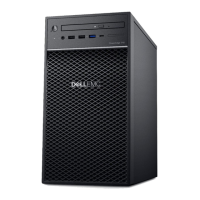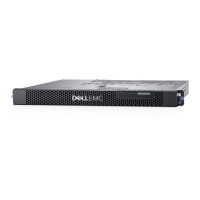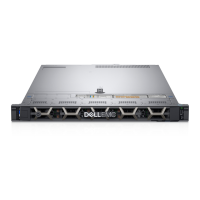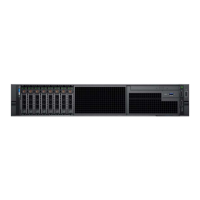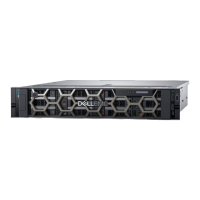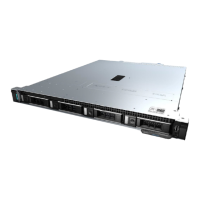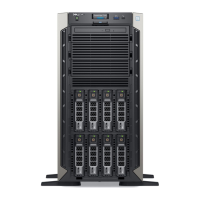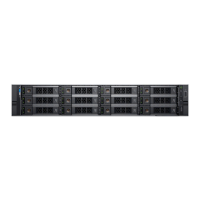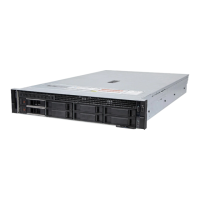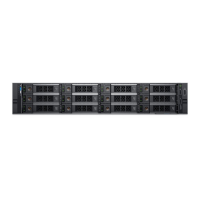Air quality requirements
The products are designed to be consistent with the requirements of the American Society of Heating, Refrigeration and Air Conditioning
Engineers (ASHRAE) Environmental Standard Handbook and the most current revision of Thermal Guidelines for Data Processing
Environments, Second Edition, ASHRAE 2009b.
Cabinets are best suited for Class 1 datacom environments, which consist of tightly controlled environmental parameters, including
temperature, dew point, relative humidity and air quality. These facilities house mission-critical equipment and are typically fault-tolerant,
including the air conditioners.
The data center should maintain a cleanliness level as identified in ISO 14664-1, class 8 for particulate dust and pollution control. The air
entering the data center should be filtered with a MERV 11 filter or better. The air within the data center should be continuously filtered
with a MERV 8 or better filtration system. In addition, efforts should be maintained to prevent conductive particles, such as zinc whiskers,
from entering the facility.
The allowable relative humidity level is 20 to 80% non condensing, however, the recommended operating environment range is 40 to 55%.
For data centers with gaseous contamination, such as high sulfur content, lower temperatures and humidity are recommended to minimize
the risk of hardware corrosion and degradation. In general, the humidity fluctuations within the data center should be minimized. It is also
recommended that the data center be positively pressured and have air curtains on entry ways to prevent outside air contaminants and
humidity from entering the facility.
For facilities below 40% relative humidity, it is recommended to use grounding straps when contacting the equipment to avoid the risk of
Electrostatic discharge (ESD), which can harm electronic equipment.
As part of an ongoing monitoring process for the corrosiveness of the environment, it is recommended to place copper and silver coupons
(per ISA 71.04-1985, Section 6.1 Reactivity), in airstreams representative of those in the data center. The monthly reactivity rate of the
coupons should be less than 300 Angstroms. When monitored reactivity rate is exceeded, the coupon should be analyzed for material
species and a corrective mitigation process put in place.
Storage time (unpowered) recommendation: do not exceed 6 consecutive months of unpowered storage.
Fire suppressant disclaimer
Fire prevention equipment in the computer room should always be installed as an added safety measure. A fire suppression system is the
responsibility of the customer. When selecting appropriate fire suppression equipment and agents for the data center, choose carefully. An
insurance underwriter, local fire marshal, and local building inspector are all parties that you should consult during the selection of a fire
suppression system that provides the correct level of coverage and protection.
Equipment is designed and manufactured to internal and external standards that require certain environments for reliable operation. We do
not make compatibility claims of any kind nor do we provide recommendations on fire suppression systems. It is not recommended to
position storage equipment directly in the path of high pressure gas discharge streams or loud fire sirens so as to minimize the forces and
vibration adverse to system integrity.
NOTE:
The previous information is provided on an “as is” basis and provides no representations, warranties, guarantees
or obligations on the part of our company. This information does not modify the scope of any warranty set forth in the
terms and conditions of the basic purchasing agreement between the customer and the manufacturer.
Shock and vibration
Products have been tested to withstand the shock and random vibration levels. The levels apply to all three axes and should be measured
with an accelerometer on the equipment enclosures within the cabinet and shall not exceed:
Platform condition
Response measurement level
Non operational shock 10 G’s, 7 ms duration
Operational shock 3 G’s, 11 ms duration
Non operational random vibration 0.40 Grms, 5–500 Hz, 30 minutes
Operational random vibration 0.21 Grms, 5–500 Hz, 10 minutes
Systems that are mounted on an approved package have completed transportation testing to withstand the following shock and
vibrations in the vertical direction only and shall not exceed:
Technical specifications
21
